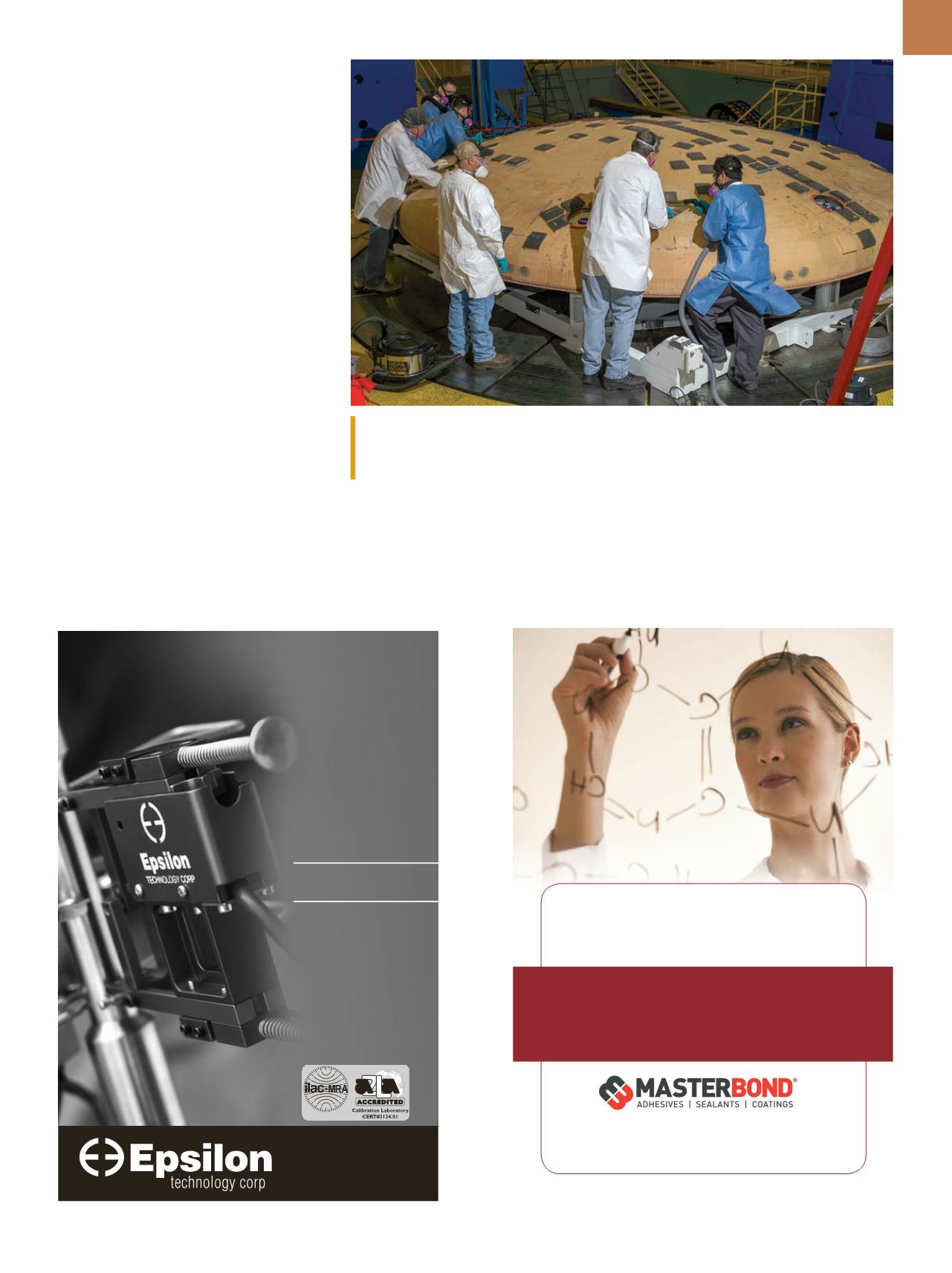

A D V A N C E D
M A T E R I A L S
&
P R O C E S S E S | J U N E
2 0 1 5
1 1
Engineers fromNASA’s Ames Research Center in Moffett Field, Calif., and NASA’s Marshall
Space Flight Center in Huntsville, Ala., remove segments of a heat-resistant material called
Avcoat from the surface of the Orion heat shield. Courtesy of NASA.
Extensometers Strain measurement for materials testing Compatible with all major test systems • Measuring ranges from 1% to 2000% strain • Gauge lengths from 0.125 to 10+ inches (3 to 250+ mm) • Temperature ranges from -265 to 1600°C • Laser extensometers 3975 South Highway 89 Jackson, WY 83001 USA 307 733-8360 www.epsilontech.com Over 30 models to cover all common tests ISO 170252013.15 AMP Dir b&w ad_2002.02 ad 1/2/14 10:41 AM Page 1
Need A Technical Specialist For Your Adhesive Needs? 154 Hobart Street, Hackensack, NJ 07601 USA +1.201.343.8983 • mainmasterbond.com www.masterbond.com • Personal one-on-one assistance • Custom formulations • Latest technological developments • Available in small to large volumes2019AS_3.25x4.875.indd 1
4/20/12 12:08 PM
The milling machine features a
fixed, rotating structure that enables
researchers to inspect the 5000-lb
heat shield and remove samples of the
ablated material from its surface. The
team is removing the final scorched
squares of ablative material—and the
data-gathering sensors embedded in
many of them—by hand. The sensors,
designed and fabricated at Ames, col-
lected critical entry environment and
thermal protection performance data
during the EFT-1 flight. Once those fi-
nal pieces are removed for analysis,
the milling machine will be used for
a final pass to smooth the denuded
heat shield, a series of 320,000 honey-
comb-like cells covering the entire
surface. Charred blocks, sensors, and
other materials will be shipped to re-
search teams at Ames and other NASA
facilities. Teams who tested and qual-
ified the materials prior to flight will
now analyze the thermal performance.
Data gleaned from the material and
from the heat shield’s behavior during
reentry will help researchers refine
predictive computer models and assist
with development of safer, more cost-
effective ways to design and build these
protection systems.
nasa.gov.


















